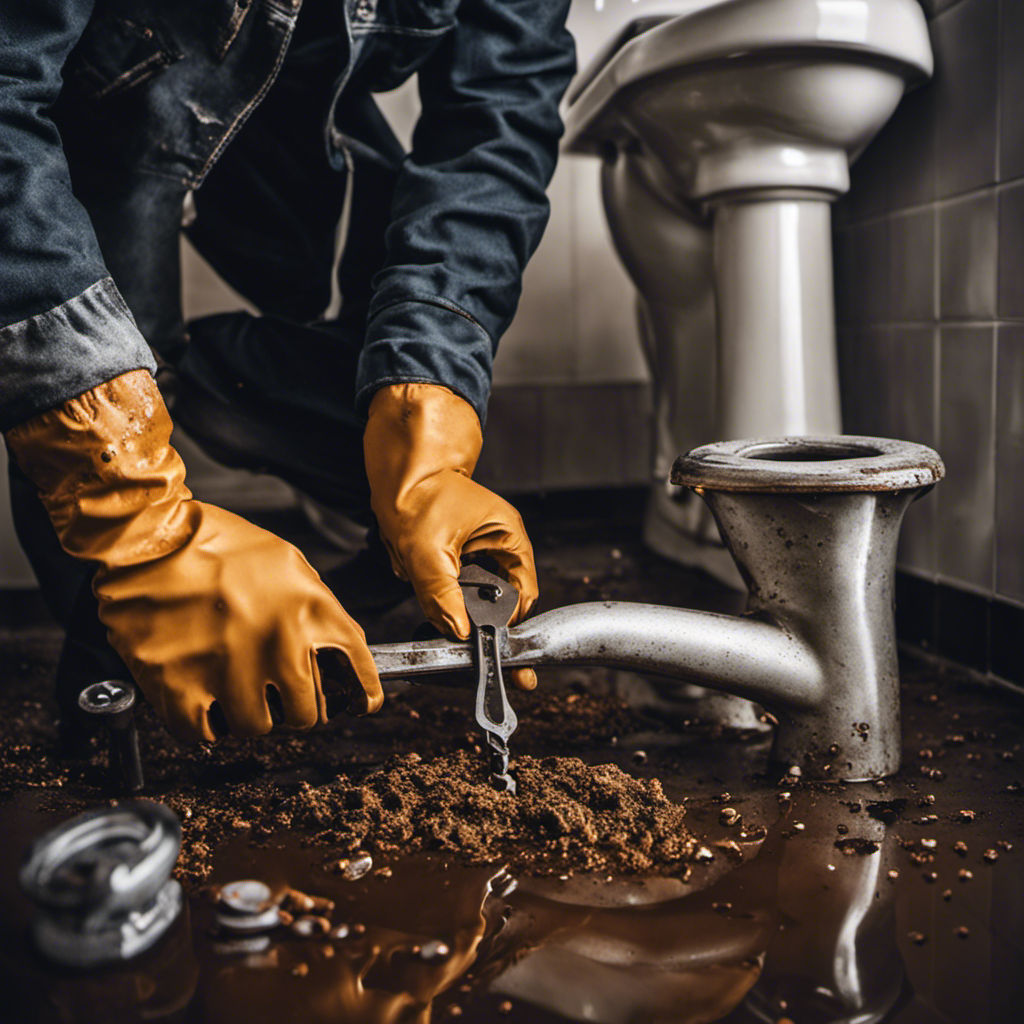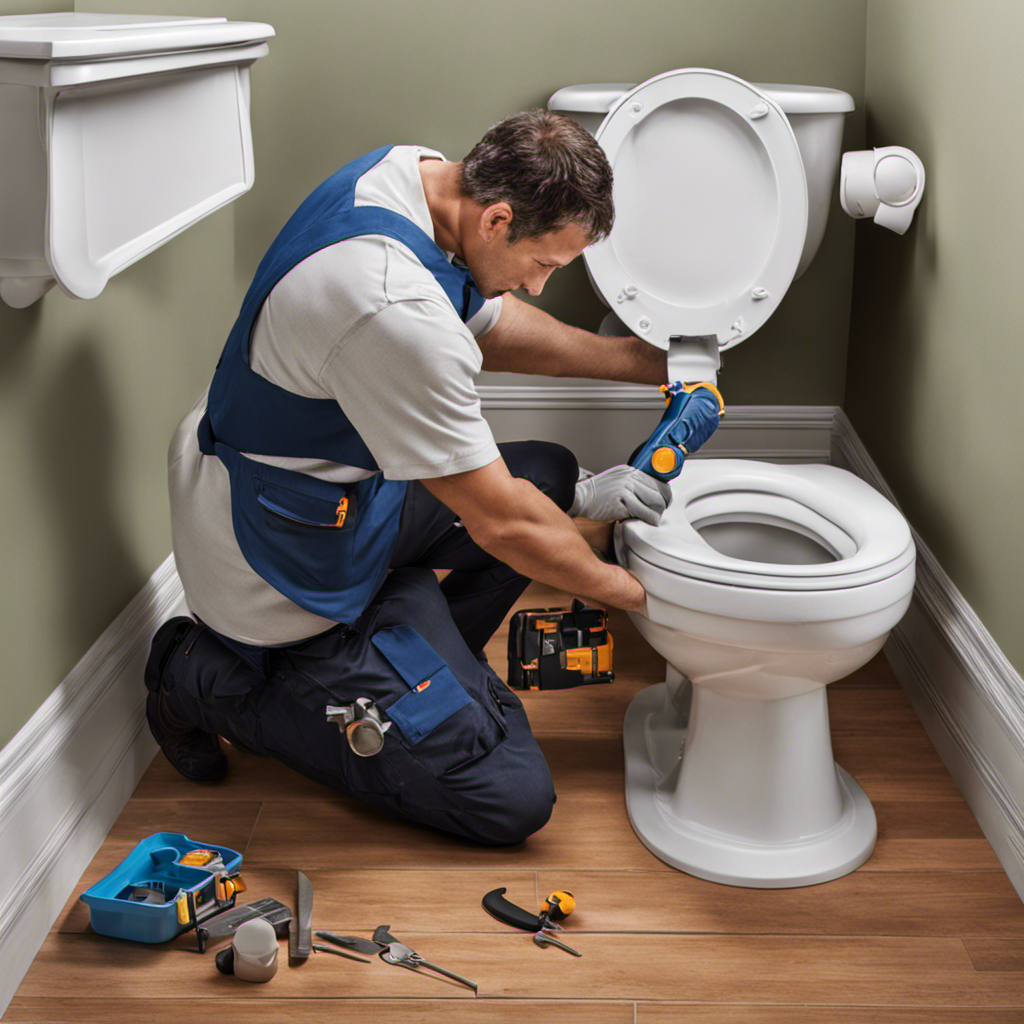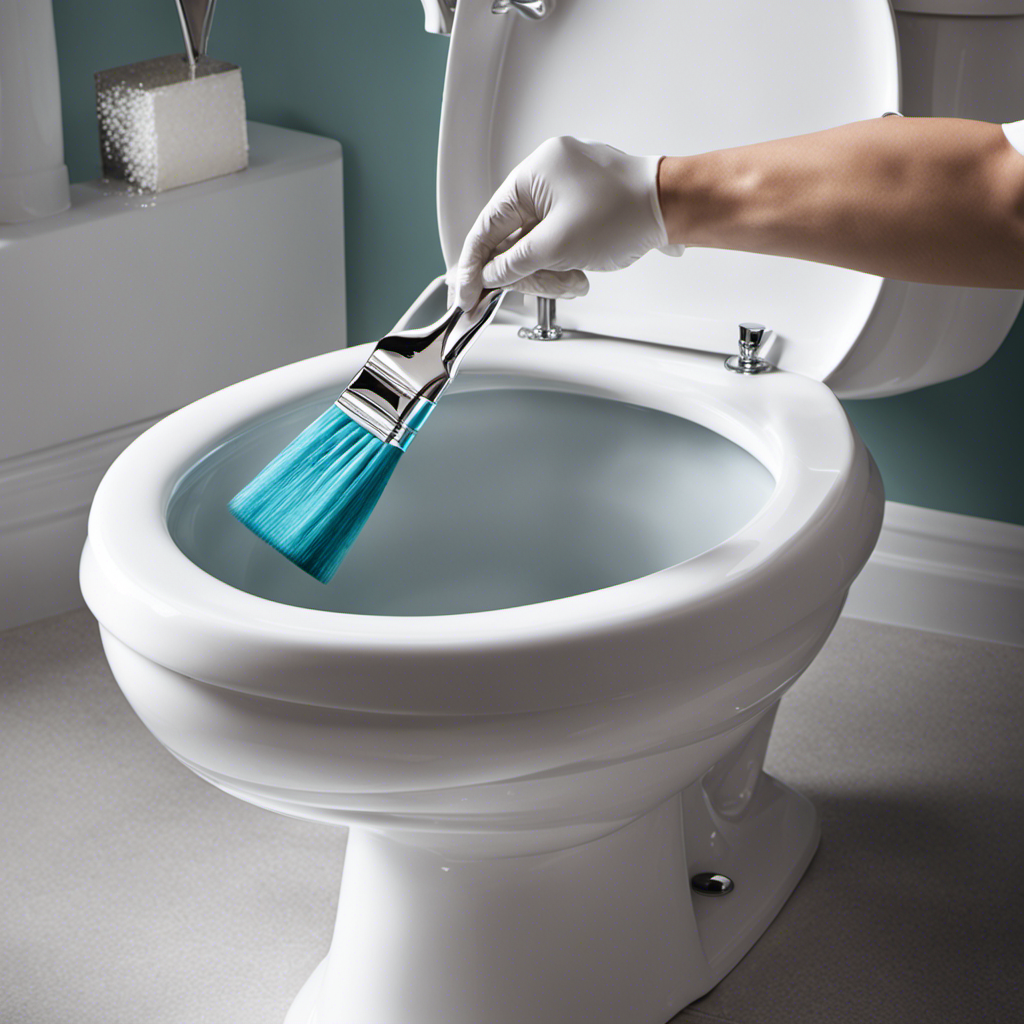Well, replacing a toilet may not be rocket science, but it’s definitely no walk in the park. Trust me, I’ve been knee-deep in plumbing projects before.
In this article, we’ll dive into the nitty-gritty of how hard it really is to replace a toilet. From the tools you’ll need to troubleshooting common issues, I’ll guide you through the process step-by-step.
So, put on your DIY hat and let’s get down to business!
Key Takeaways
- The tools and materials needed for toilet replacement include an adjustable wrench, screwdriver, putty knife, wax ring, and level.
- When removing the old toilet, it is important to protect hands with gloves, turn off the water supply, flush the toilet, disconnect the water supply line, remove the bolts securing the toilet to the floor, and lift the toilet onto a towel or drop cloth.
- When installing the new toilet, it is crucial to properly align the wax ring, avoid overtightening bolts, consider bowl shape, flushing power, and water efficiency when choosing a toilet model, and take measurements to ensure a proper fit in the bathroom.
- Some common troubleshooting tips include checking the wax ring alignment to prevent leaks, ensuring the toilet bowl height matches the old one for proper plumbing connections, tightening bolts evenly to prevent leaks, inspecting the flange and replacing if necessary, and using a level to ensure a straight installation.
Required Tools and Materials
To replace a toilet, you’ll need a few tools and materials. When it comes to toilet installation, having the right tools is essential to ensure a smooth and successful process. Some of the basic tools you’ll need include an adjustable wrench, a screwdriver, a putty knife, and a wax ring. Additionally, you may also require a level, a hacksaw, and a bucket for removing excess water.
As for materials, you’ll need a new toilet, a wax ring, closet bolts, and a water supply line. The cost of toilet replacement can vary depending on factors such as the type and quality of the toilet, as well as any additional plumbing work required.
Now that you have all the necessary tools and materials, let’s move on to the step-by-step guide to removing the old toilet.
Step-by-Step Guide to Removing the Old Toilet
First, you’ll need a pair of gloves to protect your hands during the removal process.
The toilet removal process can seem daunting, but with the right steps, it can be done smoothly.
To begin, turn off the water supply to the toilet and flush it to drain out any remaining water.
Next, disconnect the water supply line and remove the bolts securing the toilet to the floor.
Once the toilet is loose, carefully lift it up and place it on a towel or drop cloth to prevent any water or debris from spreading.
Finally, remove the old wax ring from the flange and clean the area thoroughly.
Following these toilet replacement steps will ensure a successful removal process and pave the way for installing a new toilet.
Installing the New Toilet: A Detailed Walkthrough
Once the old toilet has been successfully removed, you can now focus on installing the new one.
When it comes to toilet installation, it’s important to avoid common mistakes and choose the right toilet model.
One common mistake is not properly aligning the wax ring. This can lead to leaks and water damage. Make sure to center the wax ring on the toilet flange and press it firmly into place.
Another mistake to avoid is overtightening the bolts that secure the toilet to the floor. This can crack the toilet or damage the flange. Tighten the bolts just enough to secure the toilet in place, but be careful not to overtighten.
When choosing the right toilet model, consider factors such as bowl shape, flushing power, and water efficiency. Take measurements to ensure the new toilet will fit properly in your bathroom.
Troubleshooting Common Issues During Toilet Replacement
When encountering leaks during toilet replacement, it’s important to check the wax ring alignment. A common issue that can lead to leaks is improper alignment of the wax ring. The wax ring is responsible for creating a watertight seal between the toilet bowl and the sewer pipe.
To ensure proper alignment, start by placing the wax ring on the flange. Make sure it is centered and sitting flat. Then, carefully lower the toilet bowl onto the wax ring. Ensure that it is properly aligned with the bolts on the flange.
Tighten the bolts evenly to secure the toilet bowl in place. This will help prevent any leaks from occurring.
Additionally, it’s crucial to consider the toilet bowl height during replacement. Make sure that the new toilet bowl matches the height of the old one. This will help prevent any potential issues with the plumbing connections.
Taking these steps will help ensure a successful toilet replacement without any leaks or other problems.
Helpful Tips and Safety Precautions for a Smooth Toilet Replacement Process
To ensure a smooth toilet replacement process, remember to take safety precautions and follow these helpful tips.
-
Start by selecting the right toilet for your bathroom. Consider factors such as size, style, and flushing mechanism.
-
Measure the rough-in distance, which is the distance between the wall and the center of the toilet flange. This will help you choose a toilet that fits properly.
-
When removing the old toilet, turn off the water supply and drain the tank completely. Use gloves and goggles to protect yourself from any potential splashes or leaks.
-
Avoid common mistakes like overtightening bolts, which can crack the toilet base, or using the wrong wax ring, which can cause leaks.
-
Before installing the new toilet, inspect the flange and replace it if necessary. Use a level to ensure the toilet is installed straight.
-
Finally, make sure to properly seal the toilet to the floor using a wax ring or a wax-free seal.
Following these tips will help you avoid any mishaps and ensure a successful toilet replacement.
Conclusion
In conclusion, replacing a toilet may initially seem daunting, but with the right tools, materials, and guidance, it can be smooth sailing. Just like a skilled sailor, you can navigate through the process, overcoming any obstacles.
By following the detailed walkthrough and troubleshooting common issues, you’ll soon have a brand new toilet that functions flawlessly. Remember to keep these helpful tips and safety precautions in mind for a successful and satisfying toilet replacement experience.
Happy sailing!










